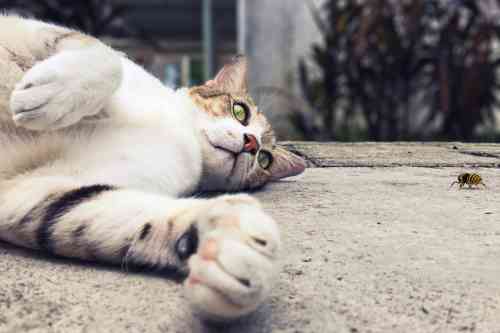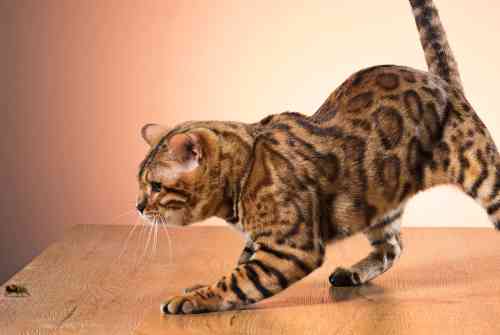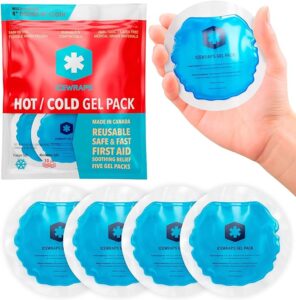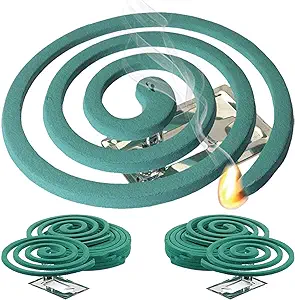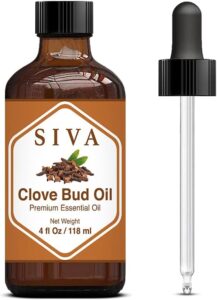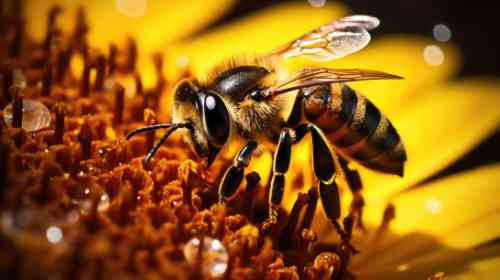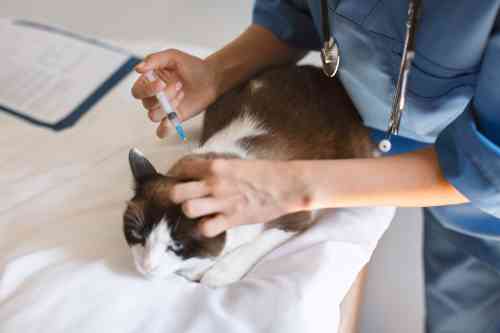Best treatment if your cat was stung by a bee
And why that is
Very annoying, of course, if your cat has been stung by a bee. Although it is a painful experience for your cat, in most cases there is no reason to worry. However, an allergic reaction is possible, but quite rare. In this article we explain what happens when your cat is stung by a bee, what causes the bump and, most importantly, what you can do to ease your cat’s pain. Which home-remedies are best to use for it and why, is all explained below. So quickly read on how you can help your little friend.
How does a bee sting occur in a cat?
Cats sometimes tend to be very curious and playful. And what could be more fun than playing with such a flying little creature? Unfortunately, until then, they do not know that such a bee or other insect has a quite vicious sting. The bee flies around and sits down on something, again and again. Your cat tries to catch it, causing it to fly away again. Very nice, your cat thinks. Something to play with. Until that bee or other stinging insect is actually caught and stings your cat. It will therefore not surprise you that most bee stings occur in the mouth and on the paws of a cat. After all, that’s how he grabs that bee.
A cat is more likely to be stung in August, because at that time there is less food left for the bee and wasps and they therefore come more towards people because of the sweet drinks and foods that we like to eat and drink.
What symptoms do you see in a cat if it was stung by a bee?
General symptoms for your cat if it was stung by a bee or wasp
If your cat is stung by a bee or other insect, a small amount of a toxic substance is injected into your cat’s skin. This toxic substance damages the skin cells at the site of the sting. This releases substances from those damaged cells, so that your cat’s body “knows” that there is a problem in that area. The result is that an inflammatory reaction occurs. This is a painful, often itchy swelling as a result of that rapid inflammatory response. His paw gets swollen. This mechanism occurs in most forms of a sting from a bee or other insect.
In addition to the painful bump, you can also see that your cat is limping slightly with the paw in which it was pricked.
Allergic reaction if your cat was stung by a bee or wasp
However, it is also possible that your cat develops an allergic reaction to the poison injected by the bee or another insect. In that case, a much larger area can swell enormously. This occurs as a result of, among other things, histamine that is released by immune cells after your cat has been stung. We call this angioedema, with a difficult word. When this swelling occurs in the mouth, your cat’s airways may swell to such an extent that air can no longer pass through. He will then die from suffocation. This only occurs when your cat has been stung in its mouth or in its neck region.
Anaphylactic shock if your cat was stung by a bee or bee
In the very worst case, there is an anaphylactic shock as a result of a bee sting. Numerous physical immune responses are activated in response to the poisonous substance from the bee or other stinging insect. In particular, the amount of histamine, but also other substances, released from immune cells, ensure that the blood vessels open very wide and allow water to seep from the bloodstream into the surrounding tissues very easily. The result is a life-threatening drop in blood pressure, swelling of tissues and organs and an increased heart rate. You can recognize this by a very pale gum color. Instead of light pink, it may look gray or pale.
Since the airways can swell up and block air passage too, you may also notice difficulty breathing in your cat. It is possible that your cat will lose consciousness within a few minutes, but this can sometimes take up to half an hour. The more severe the anaphylactic allergy, the faster the loss of consciousness will occur. It goes without saying that you should go to your vet immediately if you think your cat starts to look drowsy in such a case.
Can a bee sting hurt a cat?
In the vast majority of cases when a cat is stung by a bee or other insect, there is only pain and the development of a bump at the site of the sting. However, it is also possible that your cat develops an allergic reaction to the venom injected by the bee or another insect. Above we have already described the symptoms you can see if your cat was stung by a bee. There are several types of allergic reactions, but the most dangerous reaction is anaphylactic shock. This is partly caused by the speed at which this reaction occurs.
Unfortunately, as far as we know, no studies have been done to find out how often a bee sting in a cat can cause a life-threatening allergic reaction. However, it is generally accepted that this occurs much less often in cats than in humans. According to a study by InformedHealth.org, only 2% of humans worldwide experience a life-threatening allergic reaction as a result of a sting by a bee or other insect. It is therefore very likely to be even less than 2% in cats. In other words, in most cases your cat will only get a painful lump of about 1 cm in diameter, but will not suffer any serious consequences.
What should you do if your cat was stung by a bee?
Remove stinger
With some insects, a stinger may remain in your cat’s skin after your cat has been stung. This may be the case with a bee sting. However, wasps do not leave their stingers in your cat’s skin. So see if you see a stinger in the bump that is growing in your cat. After all, you don’t always know for sure which stinging insect it was. If you see a stinger, the venom sac may still be there and is not yet completely empty. That is why it is important that you do not empty the venom sac when you remove the sting. The best way to remove the stinger is, for example, by scraping the sting sideways with a bank card until it comes out. Do not use a pincet, because that wil sqeeze the venom out of the stinger into your cat.
Prevent swelling
You can prevent a swelling and the onset of pain by holding a cool pack against it for about 10 minutes. But yes, not all cats allow this. With this cool pack you ensure that the blood vessels shrink and therefore release less fluid from the blood vessels into the tissue. The swelling, and therefore the bump, will then remain smaller. Don’t have a cool pack? You can also use a frozen object from the freezer. Make sure you put a clean towel around a cool pack or frozen object. This prevents frostbite on your cat’s skin.
Vinegar to neutralize bee venom
In many cases it is also advised to put vinegar on the sting. For example, hold a cotton ball with vinegar on it for a few minutes. The idea behind it is that a bee’s alkaline venom becomes less active when it comes into contact with an acid. However, a wasps venom is acidic in itself, so this method does not work in case of a wasp sting. However, as far as is known, scientific research has never been able to prove its usefulness for a bee sting.
Reduce itching and irritation
During the hours and days after the sting, you can treat the swelling with calendula ointment, aloe vera or menthol ointment. This gives a soothing feeling on your cat’s skin. However, make sure that your cat does not ingest too much of it. And of course don’t put it in his mouth if he gets stung there. Do not use products intended for humans for this purpose, as cats can’t process all the substances in their bodies that humans can. The products below are specially made for cats and are therefore safe to use if your cat has been stung by a bee.
If in doubt, visit your vet
However, does your cat seem to have reduced consciousness after a sting or does the swelling quickly become larger than 1 cm? Then it is better to take your cat to your own vet. In that case it could be an allergic reaction. And they can quickly turn fatal. Better safe than sorry!
What does your vet do if your cat was stung by a bee?
Does your cat have problems with its consciousness? For example, does he wander around after being stung by a bee? Or do you see a larger swelling developing than the normal swelling of approximately 1 cm? In that case, it is important that you consult your veterinarian immediately. Also in the evening, at night or during the weekend! Your vet can administer medication to your cat to slow down the allergic reaction (anti-histamine or corticosteroids) and, if necessary, medication can be given to bring blood pressure back to normal and a normal heart rhythm (epinephrine, better known as adrenaline) in your cat. If your cat suffers from severe shortness of breath, your vet may also place your cat in an oxygen tank, or even place a tube in his throat through which he can administer oxygen.
How do you prevent your cat from being stung by a bee?
You can never completely prevent your cat from being stung. But you can ensure that as few bees and wasp as possible come near your cat. In order to get that done apply the following tips:
- Cover sweet drinks and food and put it away (in the refrigerator) so that bees and wasps will no longer smell it.
- Put up bee traps
- Have bee nests removed as quickly as possible by a professional.
- bees and wasps do not like the strong scents of peppermint, citronella, cloves, eucalyptus, cedar and lemon. By placing this near your cat’s living environment, you ensure that bees and wasps are kept at a distance.
How long does an allergic reaction to a bee sting in your cat last?
If your cat has developed a large swelling that is not in a dangerous place, it does not necessarily need to be treated. In that case, the swelling will disappear after about 5 to 7 days. Sometimes even faster.
In almost all cases, an anaphylactic reaction will be fatal for your cat within a few hours. Unfortunately, it is not an option not to have your cat treated by a vet if you want to keep him alive. But even if your cat is one of the lucky ones who survives without treatment, there is still a good chance that he has suffered from a lack of oxygen in his brain due to low blood pressure and swelling of his airways. In that case, behavioural problems may arise, resulting in very undesirable behavior for the rest of its life.
What should you definitely not do if your cat has been stung by a bee or wasp?
- It is sometimes an impossible task, but it is very important that you as an owner do not panic. The more you panic, the less your cat will cooperate with an examination of his sting and other symptoms.
- In addition, you should not remove a bee’s stinger with tweezers. You could empty the poison sac into your cat’s skin by using tweezers and thus aggravate his complaints.
- You should not leave your cat unattended after it has been stung by a bee or other insect. After all, you must always be alert to an allergic reaction and be able to take action in that case.
- You should not treat your cat with medications made for humans. Cats lack a mechanism to remove certain medications and substances from their bodies that humans do have. This way you can poison your cat with a substance that is safe for humans.
Hopefully your cat will recover soon!
Hopefully your cat was just shocked and suffered a small bump from playing with a bee. He hopefully has learned something from it. Although some cats do need several bee stings to do so. But even if your cat has developed more serious complaints and you have gone to your vet quickly, there is a good chance that he will not suffer anything serious in the long term. In any case, we wish you and your cat the best of luck.

